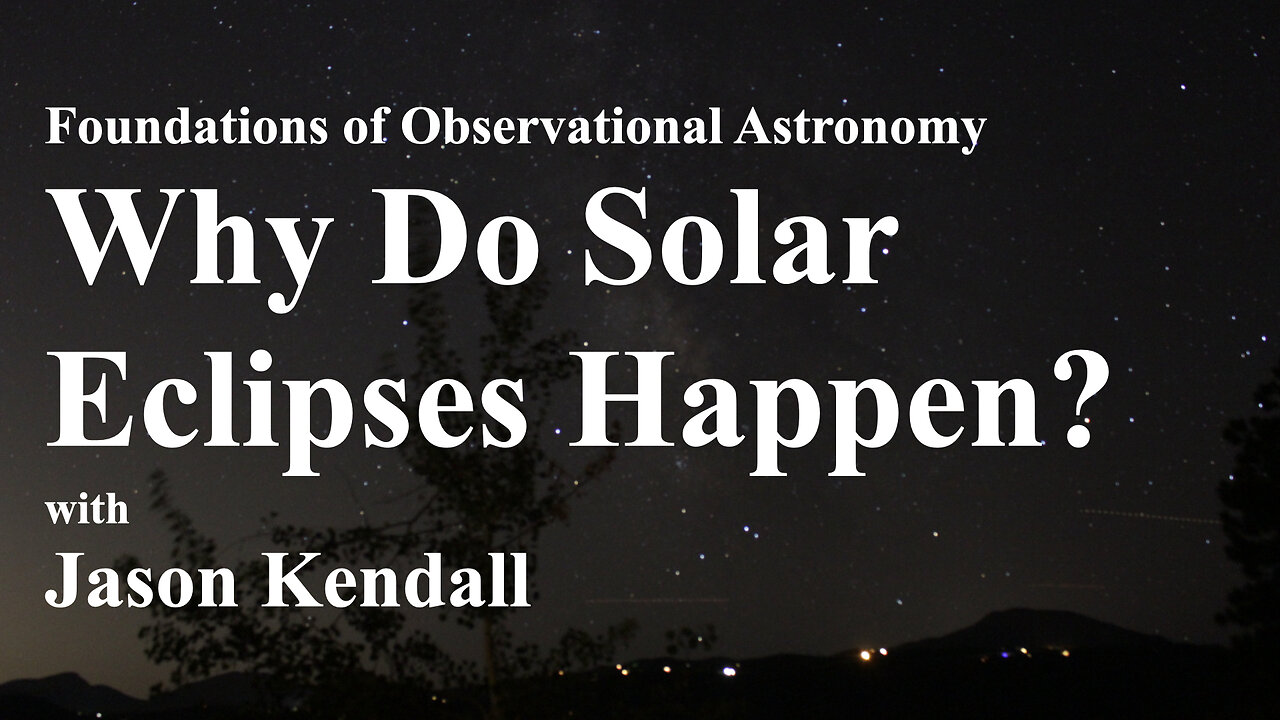Premium Only Content

Understanding Total Solar Eclipses: A Comprehensive Overview
In this session, I provide a detailed explanation of total solar eclipses, a remarkable astronomical phenomenon wherein the Moon completely obscures the Sun. Solar eclipses can be classified into three distinct types: partial, annular, and total. An annular eclipse occurs when the Moon is positioned at a distance that prevents it from fully covering the Sun, resulting in a ring-like appearance around the lunar silhouette. Solar eclipses do not occur every month due to the tilt of the Moon’s orbital plane, which is approximately 5.2 degrees relative to the Earth’s orbit around the Sun. This tilt prevents the Moon’s shadow from consistently aligning with the Earth during a new moon, leading to specific periods known as eclipse seasons, during which eclipses may take place. A total solar eclipse transpires when the Sun, Moon, and Earth achieve perfect alignment. For this alignment to occur, the Moon must be situated at a node, defined as the intersection of its orbit and the ecliptic, during a new moon. During a total solar eclipse, the dark central region of the Moon’s shadow, known as the umbra, creates a total eclipse that is observable from a limited area on Earth. In contrast, the surrounding region of the penumbra results in a partial eclipse visible from other locations. Additionally, it is essential to acknowledge that the upcoming total solar eclipse on April 8, 2024, presents a significant opportunity for observers, with various global regions set to experience this event, thereby offering unique viewing prospects. It is crucial to approach solar eclipses with caution, employing eclipse glasses, solar filters, or pinhole projectors to safeguard one’s eyes from the Sun’s intense light. Experiencing a total solar eclipse reveals the Sun’s corona, a phenomenon that creates a breathtaking sight for those fortunate enough to witness it. This event not only emphasizes the precise alignment and size similarity of the Sun and Moon from our perspective on Earth but also serves as a reminder of the remarkable celestial dynamics that govern our solar system.
-
 LIVE
LIVE
Major League Fishing
2 days agoLIVE! MLF Toyota Series Championship!
10,230 watching -
 LIVE
LIVE
FusedAegisTV
6 hours agoFUSEDAEGIS | Generational Video Game?? | Expedition 33 PART I
51 watching -
 23:31
23:31
MYLUNCHBREAK CHANNEL PAGE
21 hours agoNo Blueprints - Pt 1
5.96K5 -
 LIVE
LIVE
DHG
4 hours agoRE4R - BIORAND X3 ENEMY MULTIPLIER MOD - PROFESSIONAL
308 watching -
 30:14
30:14
Robbi On The Record
1 day ago $3.80 earnedYou’re Out of Alignment: Spiritually, Mentally, Physically. Here’s Why. ft Dr. Rich
10K2 -
 4:27:17
4:27:17
LadyDesireeMusic
5 hours ago $0.96 earnedDaily White Pill- Music & Chat
5.26K2 -
 1:33:25
1:33:25
Jeff Ahern
3 hours ago $4.24 earnedThe Saturday Show with Jeff Ahern
14.9K7 -
 LIVE
LIVE
Spartan
2 hours agoHalo 3 MCC Throwback Charity Tournament for Men's Mental Health | Kuhlect Mental Riqhts Spartan
50 watching -
 LIVE
LIVE
GrimmHollywood
3 hours ago🔴LIVE • GRIMM HOLLYWOOD • SGT WILKY'S WARZONE PALOOZA 2 •
93 watching -
 20:36
20:36
It’s the Final Round
3 hours ago $4.83 earnedNBA Best Bets & Player Props | Full Analysis & Predictions, FREE Today (Saturday 11/9) November 9th
16.6K2